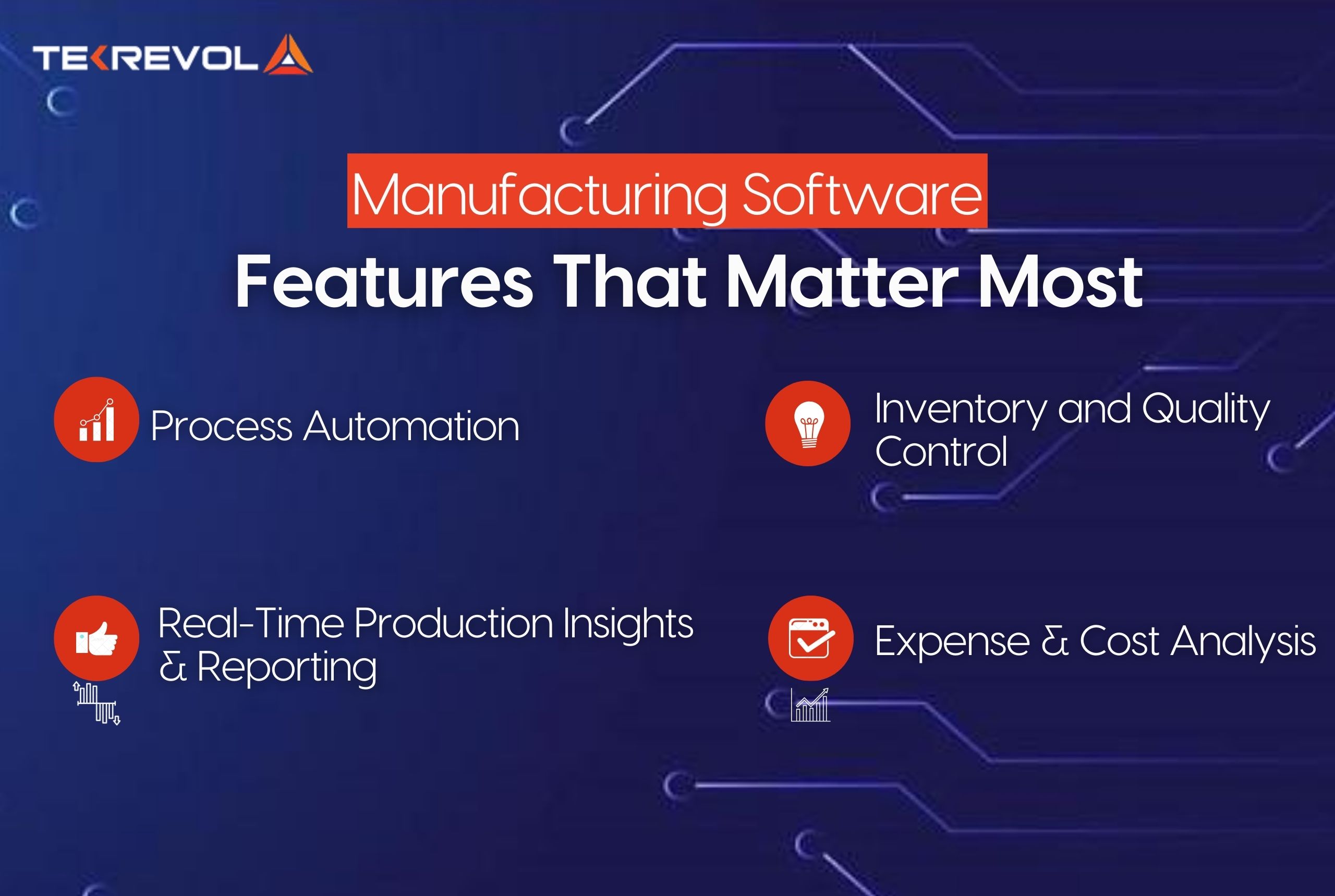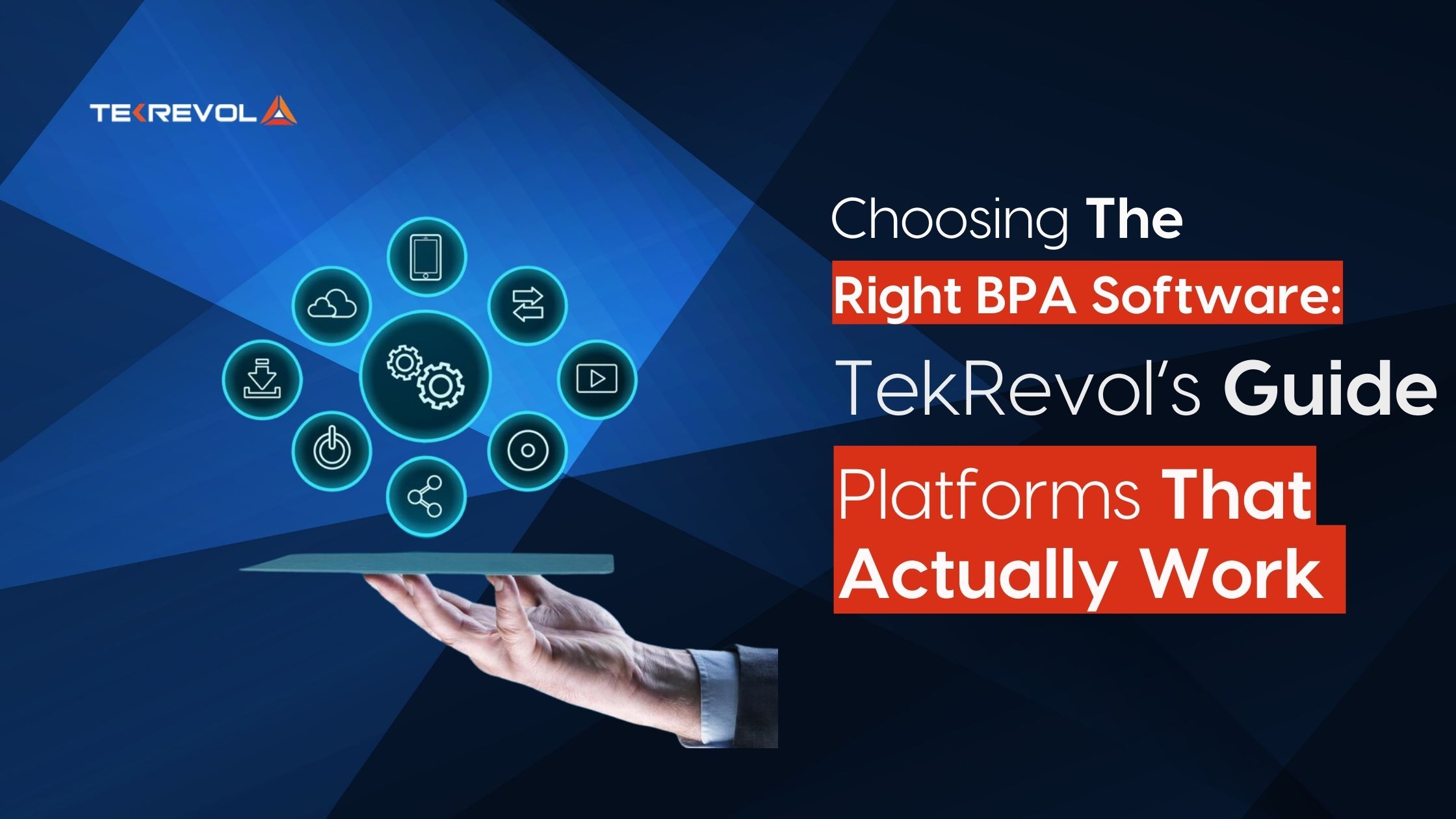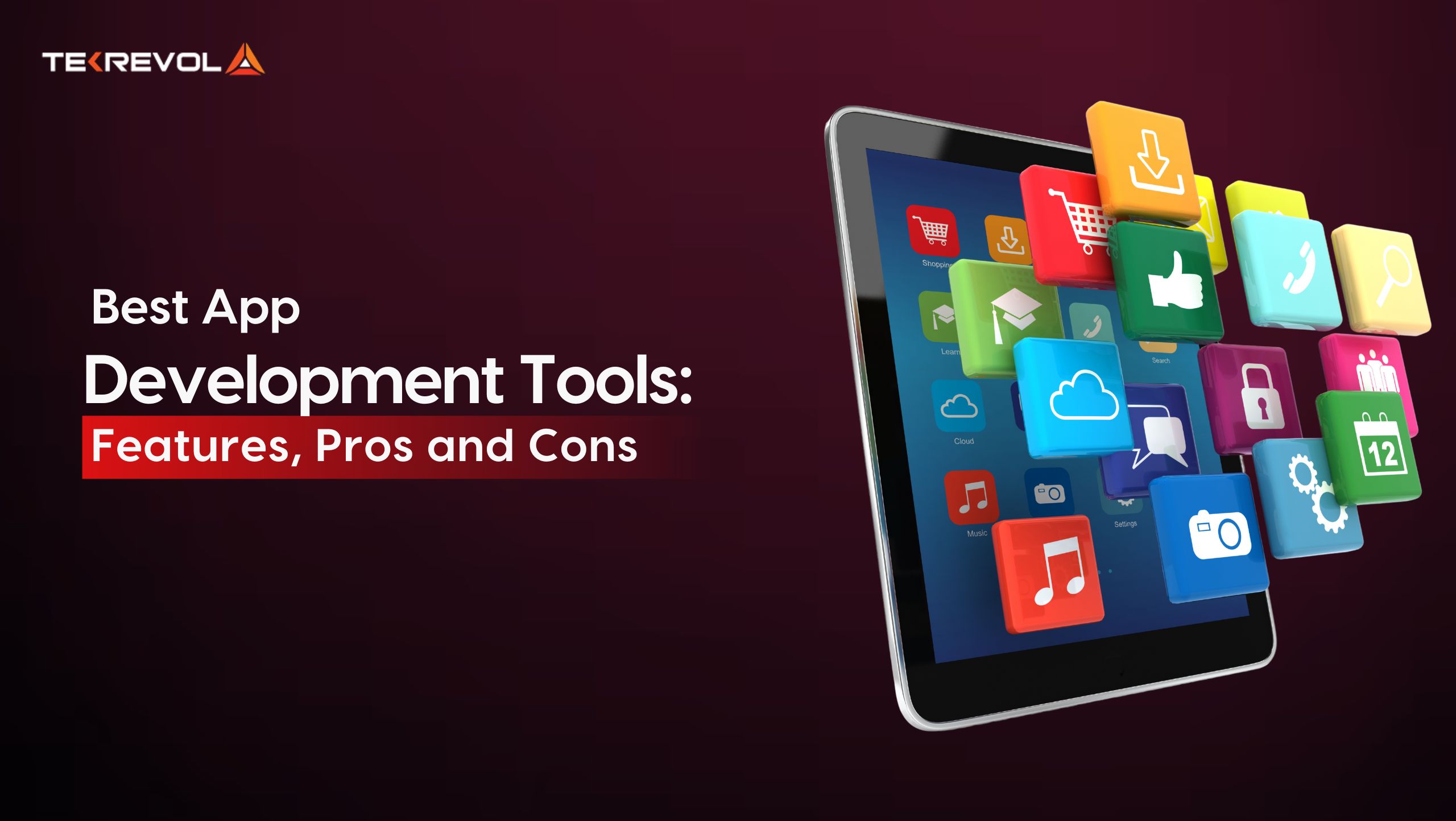Manufacturing isn’t what it used to be. Gone are the days of manual processes and guesswork—today, it’s all about automation, real-time data, and smart decision-making.
The global smart manufacturing market is expected to hit $787 billion by 2030, and it’s all thanks to game-changing software solutions.
With innovations like AI-powered predictive maintenance, real-time analytics, and cloud-based ERP systems, businesses can streamline operations like never before.
But with so many solutions out there, how do you know which ones are making the biggest impact? That’s exactly what we’re diving into.
In this blog, we’ll explore 16 cutting-edge software for manufacturing that are revolutionizing, helping businesses stay competitive, and shaping the future of the industry.
Manufacturing Software: The Backbone of Modern Production

Manufacturing software is designed to help businesses run their production processes smoothly. Modern manufacturing has evolved beyond basic product assembly into a strategic focus on precision and efficiency to maintain market leadership. That’s where manufacturing software comes in.
Digital tools eliminate operational uncertainty by helping businesses handle inventory management, production planning, resource distribution, and sales performance tracking.
Manufacturers who replace their legacy manual methods with automated workflows gain faster operations efficiency and unlimited expansion capability.
Top Benefits of Using Manufacturing Software
Here are the top advantages of manufacturing software:
1. Faster, More Efficient Production
Manufacturing software enables companies to optimize workflow execution, which results in uninterrupted production while eliminating avoidable expenses. Business operations achieve better speed and efficiency through automated repetitive work and scheduled production coordination.
2. Minimized Downtime and Improved Equipment Maintenance
Unforeseen equipment breakdowns interrupt manufacturing operations, which creates major financial problems for businesses. The predictive maintenance capabilities of manufacturing software identify equipment problems prior to system failures.
3. Higher Product Quality and Customer Satisfaction
Manufacturers need to guarantee steady product quality to succeed in their operations. Automated quality control checks and real-time monitoring help businesses produce fewer defective items while only sending high-quality products to customers.
4. Data-Driven Decision-Making for Better Performance
Manufacturing software enables businesses to optimize their production by collecting real-time data and providing analytical tools for performance tracking and efficiency identification.
5. Reduced Waste and Smarter Inventory Management
Excess inventory and overproduction result in wasted resources and higher costs. Manufacturing software minimizes unnecessary waste, tracks raw materials, and optimizes levels of inventory to enable businesses to operate lean.
- Struggling with inefficiencies in your manufacturing workflow?
- Our team builds advanced software solutions that revolutionize production and supply chain management.
List of 16 Software Solutions Powering the Manufacturing Industry
Choosing the correct manufacturing software type can make all the difference as the manufacturing industry undergoes rapid change. Here are some of the best solutions that are revolutionizing the manufacturing sector.
1. ERP Software (Enterprise Resource Planning)
Every manufacturing business requires ERP software to optimize its business functions. An ERP system functions as a unifying platform which connects departments including production and procurement with finance and supply chain operations to deliver real-time data synchronization.
Key Features:
- Centralized system for inventory, accounting, and production management.
- Collecting data in real time to make better decisions.
- Automation of supply chain management, compliance, and procurement.
- Improved cooperation throughout various corporate divisions.
Popular ERP Software:
- SAP ERP – A highly scalable solution with advanced analytics.
- Oracle NetSuite – Cloud-based ERP ideal for mid-to-large businesses.
- Microsoft Dynamics 365 – Offers AI-powered insights and automation.
- Infor CloudSuite – ERP functions exclusively for manufacturing establishments.
Use Cases:
- The manufacturer tracks inventory in real time through SAP ERP to prevent stock-related problems.
- Multinational production facilities integrate Microsoft Dynamics 365 with IoT sensors to perform predictive maintenance operations.
2. Manufacturing Execution Systems (MES)
Manufacturing Execution Systems (MES) deliver real-time process visibility through their ability to monitor operations. Integration of supply chain with ERP systems through MES delivers accurate data which enables improved production schedule optimization and helps eliminate operational breakdowns.
Key Features:
- Keeps track of production phases and offers insights into the shop floor in real time.
- Facilitates effective resource allocation and production schedule management.
- Identifies inefficiencies and stops delays.
- Makes compliance and traceability better.
Popular MES Software:
- Siemens Opcenter (formerly SIMATIC IT MES) – Ideal for complex manufacturing environments.
- AVEVA MES – Offers real-time production analytics and optimization.
- Rockwell Automation FactoryTalk MES – Focuses on smart manufacturing.
- Plex Smart Manufacturing Platform – A cloud-based MES with strong ERP integration.
Use Cases:
- The food processing plant implements Plex MES to manage both quality inspection automation and production operations.
- High-precision manufacturing facilities utilize Siemens Opcenter to achieve real-time process control.
3. Product Lifecycle Management Tools
PLM software maintains product information from inception through every lifecycle stage until final disposal. The system enables cross-team collaboration while maintaining product quality standards.
Key Features:
- Important characteristics include a centralized location for engineering, design, and quality data.
- Helps the R&D, production, and marketing teams work together.
- Facilitates better change management and version control.
- Makes sure that industry standards are followed.
Popular PLM Software:
- PTC Windchill: An IoT-capable scalable PLM.
- Siemens Teamcenter: Provides sophisticated simulation and digital twin capabilities.
- Dassault Systems ENOVIA: Concentrates on cooperative product creation.
- Autodesk Fusion 360: CAD integration makes it perfect for small and medium-sized enterprises.
Use Cases:
- PTC Windchill helps a car manufacturer monitor design changes and lower recall risks.
- A consumer electronics company uses Siemens Teamcenter to speed up the creation of prototypes.
4. Statistical Process Control (SPC) Software
SPC software employs statistical analysis to monitor production quality and control through real-time data assessment. Businesses can use this tool to monitor production patterns while detecting anomalies and correcting issues before actual defects take place. SPC solutions utilize real-time data to help businesses decrease waste while increasing efficiency and maintaining consistent production results.
Key Features:
- Gathers and examines production data to enhance the process.
- Finds and fixes manufacturing variances.
- Minimizes waste and guarantees constant product quality.
- Increases adherence to industry norms.
Popular SPC Software:
- InfinityQS ProFicient – Cloud-based SPC with AI-driven insights.
- Minitab Quality Trainer – Advanced statistical analysis for process improvement.
- QI Macros for Excel – Affordable SPC software for small businesses.
- Zontec Synergy SPC – Provides real-time quality control and alerts.
Use Cases:
- The pharmaceutical company uses InfinityQS to achieve rigorous quality control standards throughout drug manufacturing operations.
- The aerospace manufacturer implements Minitab for product defect analysis and reduction work.
5. Computer-Aided Manufacturing (CAM) Software
The digital designs generated by CAM software transform into instructions that machines can interpret to produce products through automated processes. The system enables CNC machining alongside 3D printing and robotic automation to achieve accurate manufacturing with fewer mistakes and shorter production cycles.
Key Features:
- Creates paths which CNC machines follow during their operations.
- Error rate decreases and precision reaches higher levels because of automation.
- Enables factories to manufacture automatically while delivering fast development of prototypes.
- System works seamlessly with both PLM and CAD tools.
Popular CAM Software:
- Mastercam – Industry-leading CNC programming software.
- Autodesk Fusion 360 CAM – A powerful design-to-manufacturing tool.
- SolidCAM – Integrated with SolidWorks for seamless operations.
- GibbsCAM – Known for multi-axis machining and ease of use.
Use Cases:
- A medical equipment manufacturer implements Autodesk Fusion 360 CAM software to carry out high-precision machining operations.
- Aerospace manufacturers depend on Mastercam solutions to manage automated manufacturing of components.
6. Enterprise Asset Management (EAM) Software
The function of EAM software allows manufacturers to manage and optimize all operational assets from machinery to vehicles, along with infrastructure components. The system generates operational efficiencies by using proper maintenance practices to minimize machine breakdowns.
Key Features:
- Tracks asset lifecycle from acquisition to disposal.
- Automates preventive maintenance scheduling.
- Interacts with the IoT platform to generate predictive maintenance capabilities.
- Decreases the duration of equipment failures while minimizing operational expenses.
Popular EAM Software:
- IBM Maximo – AI-powered asset management for large enterprises.
- SAP EAM – Advanced asset tracking and maintenance planning.
- Infor EAM – Cloud-based solution for asset-intensive industries.
- Fiix CMMS – AI-driven predictive maintenance tool.
Use Cases:
- By implementing SAP EAM, a large industrial operation may prevent significant machine failures.
- IBM Maximo serves as the asset tracking system used by logistics companies to keep track of their fleet assets.
7. Inventory Management Solutions
Inventory management software maintains product stock at optimum levels to avoid inventory excess or depletion. The system tracks raw materials through its entire journey and enables real-time warehouse monitoring in addition to streamlining supply chain automation.
Key Features:
- Tracking both raw supplies and completed goods in real time.
- Manages suppliers and purchase orders automatically.
- Avoid stockouts and cut down on surplus inventory.
- Connects to warehouse management systems and ERP.
Popular Inventory Management Software:
- NetSuite Inventory Management – Ideal for large-scale businesses.
- Zoho Inventory – Cost-effective solution for small businesses.
- Fishbowl Inventory – Designed for manufacturers using QuickBooks.
- Cin7 – AI-powered inventory forecasting tool.
Use Cases:
- The global retailer leverages NetSuite Inventory Management software to optimize warehouse operations.
- Zoho Inventory serves as a tracking solution for expanding eCommerce companies which need to monitor inventory across multiple locations.
8. Supply Chain Planning Tools
Manufacturers use supply chain planning tools to achieve a smooth product delivery pipeline through optimized inventory control, demand forecasting, and logistics solutions. These solutions analyze real-time data to detect potential supply chain breakdowns while decreasing operational inefficiencies to enhance delivery precision.
Key Features:
- Optimizes inventory levels by forecasting supply and demand.
- Improves transportation management and logistical planning.
- Identifies possible disturbances and recommends safeguards.
- Real-time visibility into the whole supply chain is provided.
Popular tools for supply chain planning include
- Oracle Supply Chain Planning Cloud: AI-powered insights for supply chain optimization;
- SAP Integrated Business Planning (IBP): A powerful tool for demand-driven supply chain management.
- Kinaxis RapidResponse: Real-time supply chain analytics for prompt decision-making.
Use Cases:
- A pharmaceutical producer utilizes Kinaxis RapidResponse to minimize supply chain interruptions;
- A retail company uses SAP IBP to manage inventory and demand across many locations.
9. EHS Software
The implementation of Environmental Health and Safety (EHS) software enables manufacturers to track workplace safety practices together with environmental management and regulatory compliance. This system ensures workplace safety while gathering safety data in one place for quick compliance reporting.
Key Features:
- Automates compliance reports and keeps track of workplace safety issues.
- Keeps an eye on handling dangerous materials and environmental sustainability.
- Carries out risk evaluations and inspections in real time.
- Assists companies in adhering to industry-specific health and safety standards.
Popular EHS Software:
- Cority – AI-powered EHS solutions for sustainability and risk management.
- VelocityEHS – cloud-based software for workplace safety and compliance.
- Intelex – comprehensive EHS management with data analytics.
Use Cases:
- A construction business utilizes VelocityEHS to automate safety audits and enhance compliance.
- A chemical manufacturing plant uses Intelex to track hazardous materials and lower workplace accidents.
10. Job Shop Management Software
Small manufacturers who produce highly specialized items and low volumes find their ideal solution in job shop management software. The system manages sales alongside inventory management and purchasing together with basic accounting tasks while skipping extensive ERP requirements to create operational efficiency.
Key Features:
- Tracks inventories and handles bespoke production orders.
- Simplifies financial reporting, invoicing, and quotation.
- Offers scheduling tools for efficient use of resources.
- Real-time tracking of work orders and progress.
Popular Job Shop Management Software:
- E2 Shop System – Tailored for job shops with robust scheduling and costing tools.
- JobBOSS – Provides real-time tracking for small and mid-sized manufacturers.
- ProShop ERP – Cloud-based solution with integrated quality control features.
Use Cases:
- The E2 Shop System is used by a custom furniture manufacturer to track production orders and optimize inventories.
- While JobBOSS is used by a small metal fabrication company to automate project scheduling and billing.
11. Engineer-to-Order (ETO) Software
Manufacturers who produce highly customized goods in response to particular customer specifications are the target market for Engineer-to-Order (ETO) software. It makes it easier for engineering and production teams to work together to expedite cost estimating and custom product creation.
Key Features:
- Offers bespoke design modeling using CAD integration.
- Automates material planning and expense estimation.
- Improves cooperation between the production, sales, and engineering departments.
- Monitors project development and guarantees timely delivery.
Popular Engineer-to-Order (ETO) Software:
- Siemens Teamcenter– provides sophisticated lifecycle management for products.
- Dassault Systèmes CATIA– Perfect for intricate engineering and design projects.
- PTC Windchill– Offers cloud-based collaboration and data management.
Use Cases:
- Siemens Teamcenter is integrated by a custom machinery manufacturer to expedite product engineering.
- Dassault Systèmes CATIA is utilized by a shipbuilding company for custom vessel design.
12. Material Requirements Planning (MRP) Software
Manufacturers can satisfy production expectations by using Material Requirements Planning (MRP) software to make sure they have the correct materials at the right time. It aids companies in effectively managing supplier collaboration, production schedules, and inventories.
Key Features:
- Projects material requirements using manufacturing schedules.
- Maintains contacts with suppliers and purchase orders.
- To avoid stockouts or overproduction, inventory levels are optimized.
- Improves scheduling and planning for manufacturing.
Popular Material Requirements Planning (MRP) Software:
- SAP MRP – A powerful tool for large-scale material planning.
- Fishbowl Manufacturing – Affordable and scalable MRP for small manufacturers.
- Katana MRP – A cloud-based solution with real-time inventory tracking.
Use Cases:
- A small-scale fashion brand uses Katana MRP to control inventory and expedite production.
- An electronics firm uses SAP MRP to guarantee uninterrupted material availability.
13. E-Commerce Software
E-commerce software provides manufacturing entities with a digital storefront which operates twenty-four-seven to manage sales better and reach more customers. Businesses achieve efficient order handling alongside inventory control and shipping operations by linking their production systems to online sales channels.
The software system enables manufacturers to deliver products directly to customers through automated fulfillment processes and real-time tracking assistance.
Key Features:
- Integrates with ERP and inventory management systems.
- Performs automatic order processing and maintains real-time inventory tracking.
- Provides secure payment processing and customer insights.
- Supports enhanced multi-channel sales operations across different platforms.
Popular E-Commerce Software:
- Shopify Plus – Scalable for large manufacturers with advanced automation.
- BigCommerce – Offers flexible B2B and B2C sales solutions.
- Magento Commerce – Customizable and feature-rich for enterprise businesses.
Use Cases:
- Shopify Plus enables a machinery manufacturer to sell replacement parts through an e-commerce platform.
- BigCommerce enables a textile company to handle bulk order processing while monitoring delivery logistics.
14. SKU Management Software
Businesses can easily track their inventory through SKU (Stock Keeping Unit) Management Software, which organizes products differentiated by measurements and appearance features.
SKU Management Software enables total stock identification transparency, which enhances order precision while eliminating warehouse operation issues.
Manufacturers who streamline their product categorization process both prevent stock discrepancies and achieve optimized supply chain management capabilities.
Key Features:
- Tracks individual product variants for better inventory management.
- Stock restocking alerts and automated inventory updates are among its features.
- Optimizes warehouse organization and barcode scanning operations.
- Eliminate mistakes throughout order processing and shipping operations.
Popular SKU Management Software:
- Zoho Inventory – Cloud-based SKU tracking with multi-channel integration.
- TradeGecko (now QuickBooks Commerce) – Ideal for wholesalers and manufacturers.
- Cin7 – Provides real-time SKU tracking and inventory insights.
Use Cases:
- Cin7 enables a footwear manufacturer to track their thousands of shoe variants throughout multiple warehouses.
- The electronics company utilizes Zoho Inventory for implementing automatic SKU assignment functionality to decrease stock mismatches in their system.
15. Administrative Tools
The administrative tools provide essential business functionality that supports financial management and human resources operations along with supervision of general administrative activities.
Manufacturers rely on such software solutions to handle workforce management, financial handling, and recordkeeping operations. The integration with other business systems makes administrative tools optimize operations and maintain regulatory compliance.
Key Features:
- Automatically handles payroll operations together with employee administration and invoicing.
- Enhances document management and workflow automation.
- Provides real-time financial insights and analytics.
- Ensures compliance with tax regulations and industry standards.
Popular Administrative Tools:
- SAP Business One – An all-in-one solution for small and mid-sized manufacturers.
- Odoo – Modular ERP software with HR and financial management.
- QuickBooks Enterprise – Ideal for managing accounting and payroll in manufacturing.
Use Cases:
- A mid-sized manufacturing company utilizes SAP Business One for payroll automation and financial reporting.
- A startup integrates Odoo to streamline HR processes and manage employee records.
16. Accounting Software
Manufacturing accounting software enables businesses to handle financial transactions while tracking expenses and keeping precise records. These tools provide functional capabilities that include cost accounting alongside tax compliance and financial forecasting to establish transparency across business operations. ERP systems work with these solutions to offer complete financial oversight.
Key Features:
- Conducts automatic invoicing as well as payroll tasks and handles tax computation tasks.
- Tracks manufacturing costs and profit margins.
- Delivers financial data promptly alongside predictive analysis capabilities.
- Ensures compliance with local and international accounting standards.
Popular Accounting Software:
- QuickBooks Manufacturing & Wholesale – Tailored for small manufacturers.
- NetSuite ERP – A scalable solution with advanced financial management.
- Xero – Cloud-based accounting software for cost tracking and invoicing.
Use Cases:
- A metal fabrication company with limited operations uses QuickBooks to monitor expenses while controlling employee payroll functions.
- The large-scale auto parts manufacturer deploys NetSuite ERP for production cost monitoring and financial reporting purposes.
- Confused about which digital solution will work best for your manufacturing business?
- Our team provides expert guidance to help you make the right choice.
Manufacturing Software: Features That Matter Most
To select appropriate manufacturing software, you need a thorough knowledge of the features which optimize operations. Before choosing manufacturing software, it is important to understand these key functionalities.
Process Automation
Manufacturing businesses gain substantial advantages from automation since it removes repetitive manual work while decreasing errors and enhancing productivity levels.
Systems that integrate with ERP and CRM allow automation to reduce entry points for human error and drive workflow speed while maintaining whole-company departmental coordination.
Real-Time Production Insights & Reporting
Advanced production monitoring features in manufacturing software enable real-time feedback about schedules along with operational metrics and potential system blockages.
Manufacturers use analytics to make data-based decisions which helps optimize resource distribution while ensuring operational continuity.
Inventory & Quality Control
Manufacturers can balance their product stocks at optimal levels while maintaining quality standards through effective management systems.
The software system helps users identify defects in early stages and tracks raw materials and finished products to stop supply chain interruptions. A reduction in errors combined with superior customer satisfaction marks the outcome.
Expense & Cost Analysis
Production cost optimization plays an essential role in business profitability. Search for manufacturing software that features cost-tracking capabilities to detect material expenses together with operational and labor costs. The tool helps companies adjust their prices while optimizing financial planning and budget management.
- Take your manufacturing operations to the next level.
- Partner with our expert developers for a seamless, custom-built solution.
Factors to Consider When Selecting Manufacturing Software
The selection of proper manufacturing software stands as a critical step to maximize operational performance and achieve extended work efficiency. Follow these important considerations to determine the right manufacturing software.
Core Functionalities: To solve manufacturing obstacles effectively, choose software that increases productivity, speeds up workflow, and fixes essential operational problems.
Vendor Reliability: Research the provider’s historical performance along with customer opinions and industry status to prove they deliver dependable, leading innovative solutions.
Pricing Model: The software’s pricing structure should utilize subscription-based (SaaS) features that ensure flexibility in costs and enable distance work through remote access.
Regular Updates & Support: To support compliance requirements with industry standards and operate efficiently, the software needs regular updates and strong support services.
Budget & IT Compatibility: Examine the alignment of software with IT systems while evaluating its integration with your financial resources and future technological direction.
Scalability: Look for software that adjusts to business expansion patterns while maintaining smooth operational scalability without technical interruptions.
Wrapping Up
Today we analyzed multiple manufacturing software systems which offer benefits for your business operations. Deciding to implement these solutions requires working with a trusted custom software development company.
The team at TekRevol specializes in manufacturing system development and supports businesses throughout the process of selecting suitable software solutions. We have experts capable of understanding your individual business needs and will take responsibility for each development phase to deliver the most suitable solution in a short period of time.
We assist with all types of manufacturing software needs including ERP integration and automation tools alongside personalized operational solutions.
- Need a powerful manufacturing software solution?
- Let TekRevol build the right system for your business.

 307 Views
307 Views March 10, 2025
March 10, 2025









